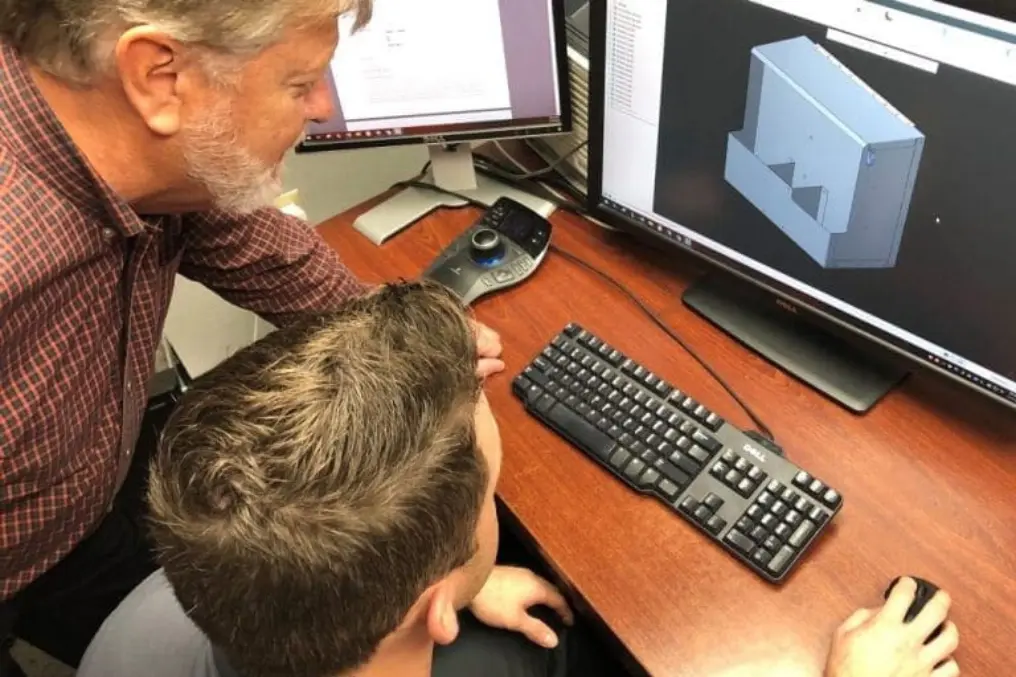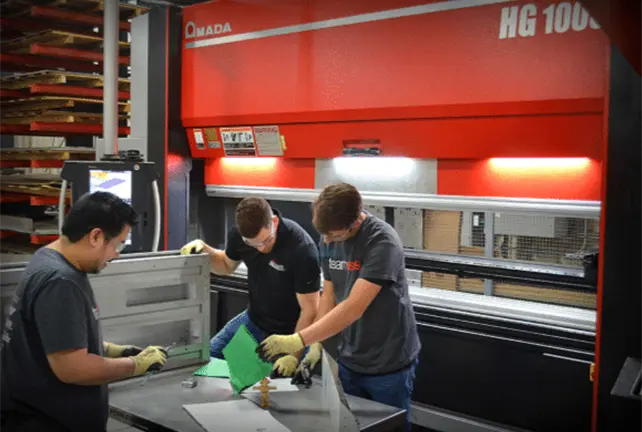Sheet metal prototyping is a specialized process used in the manufacturing industry to create physical models of products or components before they are mass-produced. By producing a prototype out of sheet metal, manufacturers and designers can physically assess and refine their designs, ensuring functionality, fit, and form meet desired specifications.
Prototyping, especially by the same fabricator, significantly reduces the chances of errors when moving into large-scale production and can result in substantial cost and time savings.
What Is Rapid Sheet Metal Prototyping?
 Rapid sheet metal prototyping focuses on speed to market – a critical element in modern manufacturing.
Rapid sheet metal prototyping focuses on speed to market – a critical element in modern manufacturing.
“Speed, from concept to finished product, is a key performance indicator in evaluating the effectiveness of product development efforts,” points out Ron Estes, Senior VP of Strategy at Estes Design and Manufacturing, where our Estes Accelerator department is a dedicated rapid sheet metal prototyping department.
There are many advantages to rapid prototyping, including:
Accelerated Time-to-Market and Revenue Generation. One of the most apparent advantages of speed in prototyping is the direct impact on product launch timelines. By quickly turning a concept into a tangible prototype and then into a final product, you can launch products into the market faster. This acceleration translates to quicker revenue generation, ultimately providing a faster return on investment.
Efficient Resource Utilization: Not all product ideas are guaranteed success. Some concepts, though seemingly brilliant in the initial stages, might not resonate with end-users as anticipated. Rapid prototyping enables businesses to validate these concepts faster. If a particular design or concept isn’t viable, it’s far more resource-efficient to determine this quickly rather than investing prolonged time and effort.
The “Fail Faster” Philosophy: While failure might seem negative, there’s an inherent value in failing quickly, especially in the prototyping phase. The faster a business recognizes the flaws or non-viability of a concept, the quicker it can learn, iterate, and move forward. This approach minimizes waste of time and resources.
“Not every concept is a winner,” Estes says. “It’s easy for you or your customer to fall in love with a product idea but then find the end user is not so enamored. If this is the case, you want to learn that quickly. In some instances, this can lead to a pivot, an adjustment in the course to incorporate newfound information and alter the design objectives. In other cases, it may mean pulling the plug on an entire project. If that’s the outcome, you want to take that step as soon as you establish your idea isn’t viable. In other words, you want to fail faster.”
What Is the Process for Sheet Metal Prototyping?
The process of sheet metal prototyping involves four main steps:
 Step 1: Identify. The initial step in the prototyping process involves understanding the core objectives and requirements of the project. This stage is crucial as it sets the foundation for the entire project, ensuring all involved have a clear and unified vision.
Step 1: Identify. The initial step in the prototyping process involves understanding the core objectives and requirements of the project. This stage is crucial as it sets the foundation for the entire project, ensuring all involved have a clear and unified vision.
At Estes, each of our customers is assigned a dedicated account manager who is an expert in engineering, fabricating, and packaging. They will manage the entire project, from the first call to manufacturing. This ensures efficiency and clear communication at all times.
“You’re dealing with the same person from start to finish. It really becomes a partnership,” Roger Brown, Director of Business Development at Estes, says.
Step 2: Design. The design phase is where ideas are transformed into tangible concepts. The design phase is iterative, allowing for adjustments and improvements as the prototype evolves.
At Estes, our Accelerator prototyping department is set up in its own area, so it’s not influenced by production schedules, yet it has access to all our manufacturing equipment. This helps ensure we deliver the quality the customer expects in the designated time frame.
 “One thing we hear the most is about our quality. Customers always say we knocked it out of the park,” John Kurrus, Prototype Manager at Estes, says. “And it’s not just the fit, function, and aesthetics of the part, it’s also the overall experience they have. You get it on time, it works, and looks good.”
“One thing we hear the most is about our quality. Customers always say we knocked it out of the park,” John Kurrus, Prototype Manager at Estes, says. “And it’s not just the fit, function, and aesthetics of the part, it’s also the overall experience they have. You get it on time, it works, and looks good.”
Step 3: Design Approval & Quoting. Once the prototype is approved for mass production, a quote for manufacturing is developed.
At Estes, our quotes are turned out very quickly since we have tested the prototype in-house with our equipment and have optimized it for manufacturability and assembly. We also invite our customers to tour our manufacturing facility to see how their new part or product will be manufactured.
Step 4: Project Launch & Manufacturing. Depending on the complexity of the design, various manufacturing methods might be employed.
At Estes, our manufacturing facility includes some of the most advanced machinery, including the Max Velocity automated sheet metal fabrication cell, Amada hydraulic press brakes, MIG, TIG, 3D laser welding, Salvagnini CNC laser cutters, and more.
“Most other companies don’t have the advanced machinery and equipment we have,” Kurrus points out.
>> Take a Virtual Tour of the Estes Facility Here
Customer Success Story: Estes Accelerator Delivers Quick-Turn Prototype for Global Company
One recent Accelerator prototyping project involved a complex enclosure design brought to Estes by Tony Parker, owner of Avance, LLC, a product development company specializing in industrial design and 3D engineering.
“When a global client tasked us with sourcing an enclosure design comprised of 20 unique parts that had to fit, function, AND be aesthetically accurate within a three-week window, I was skeptical at best,” Parker says. “However, a call to Estes Accelerator quickly changed my mind.”
The Accelerator team poured over the CAD data and delivered a quote and fabrication strategy that met the customer’s goals. Within a tight timeframe, the Accelerator team delivered two units that were well-received by the customer and even showcased at an industry trade show.
“The way in which the Estes Accelerator team took ownership of my project was impressive, and that attitude did not stop after the parts were delivered,” Parker says. “Moving forward, I can feel confident knowing that my business has now expanded its capabilities with a trusted partner in Estes Accelerator.”
At Estes, our Accelerator prototyping department works with various industries, from government/defense contractors to manufacturers of medical devices, architectural facade panels, and more.
Reach Out to Estes Accelerator for Your Next Sheet Metal Project
Estes Accelerator helps businesses transform their product visions into tangible prototypes and final products. Whether you’re starting with a simple idea, a basic sketch, or an existing product that needs refinement, the Accelerator team is equipped to bring your vision to life.










